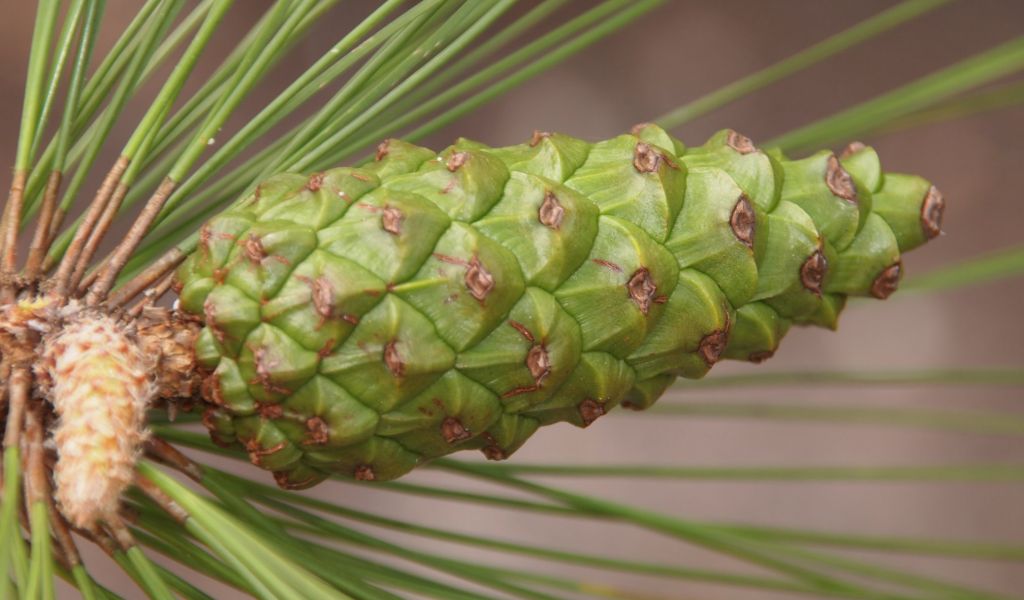ໄມ້ແປກສອງຍອຍ / Two-needles Pine
APA 6th ed. ໄມ້ແປກສອງຍອຍ / Two-needles Pine. (2019, April 3). Retrieved from https://www.phakhaolao.la/kb/0000206
MLA 8th ed. ໄມ້ແປກສອງຍອຍ / Two-needles Pine. Pha Khao Lao, 3 April 2019, https://www.phakhaolao.la/kb/0000206.
Chicago 17th ed. Pha Khao Lao. 2019. "ໄມ້ແປກສອງຍອຍ / Two-needles Pine." Published April 3, 2019. https://www.phakhaolao.la/kb/0000206.

Pinus merkusii subsp. ustulata Businský
Pinus sumatrana Mirb..
Lao: Paek songbai, Paek yang, Khoua
Vietnamese: Thông nh.̇ua, Thông hai lá
Big trees up to 50 m high, 60–80 cm diameter. Trunk straight, cylindrical, resinous. Bark thick, reddish when young, dark brown or blackish when old, deeply fissured longitudinally. Crown pyramidal with heavy horizontal branches. First year branches brownish, glabrous, without white powder. Foliage buds long and narrow with awl shaped scales. Needles in pairs of 2.15–28 × 1 mm, abruptly pointed, stomata on both surfaces, falling in the second year. Basal sheath 10–20 mm long, reddish. Male cones 18–25 × 5 mm. Female cones cylindrical before opening, 5–11 × 3 cm, usually falling soon after shedding seeds. Seeds ovate, slightly flat, 7.5 × 4.5 mm, with a thin wing 25 × 8 mm.
Pinewood is mainly used for house construction. Used for board-making, window or door frames, old trees are chipped for resinous wood used as torches, also for matches, paper pulp, furniture, pit props, electronic poles, ships and vehicle-building. High content of resin, each tree gives 3–4 kg of resin per year which is used for medicine, paints, printing, and in the perfume industry.
